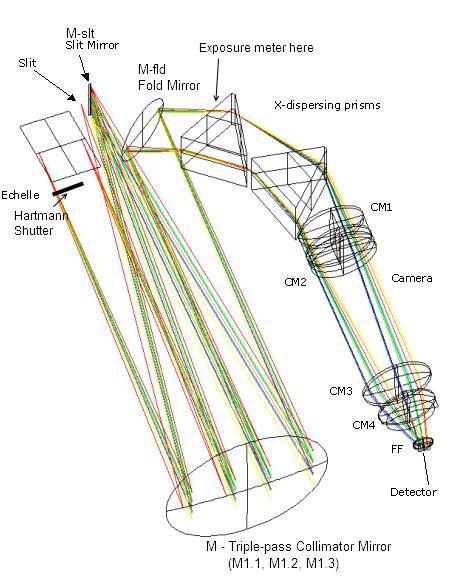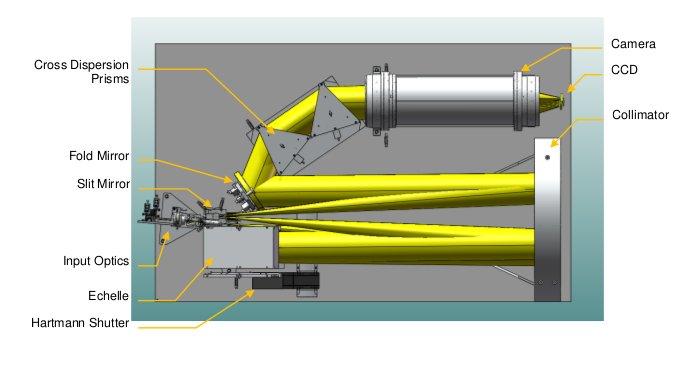A cross-dispersed near-Littrow echelle spectrograph forms high-resolution (R = 60,000) echellegrams of the sliced fibre inputs and lower resolution (R = 30,000) echellegrams of the unsliced fibre inputs.A smaller beam size enables the overall spectrograph footprint to be made more compact facilitating a design that fits on one optical table.
The 177mm collimated beam is formed from the f/10.45 slit outputs by an off-axis portion of a paraboloidal mirror of focal length 1850 mm. A 65°, 52.67 lines/mm reflective echelle grating intercepts the collimated beam and redirects the dispersed, collimated light, back to the paraboloid. The paraboloid focuses the dispersed image of the slit onto a plane “intermediate slit mirror”. The light returns to the paraboloid and is re-collimated.The collimated light passes through two thick prisms that cross-disperse and separate the many different orders from the echelle. This produces the necessary order separation (more than 400μm centre to centre) on the detector near the red end of the echellegram. An f/2.7 camera images the cross-dispersed orders onto a detector to form an echellegram.
 |
 |